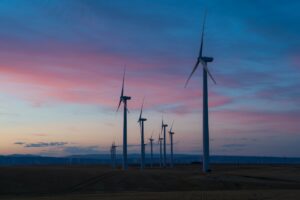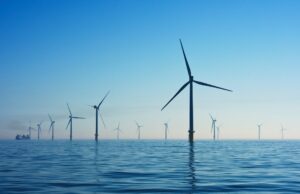Alberta 
‘Albertans will not tolerate it’: Smith reacts to new federal oil and gas emissions cap
 The Alberta government is pushing back against Ottawa’s newly announced framework for a cap-and-trade system that’s designed to have the oil and gas industry cut emissions by more than one-third from 2019 levels by 2030. It states the oil-and-gas sector will have to reduce emissions from 35 to 38 per cent below 2019 levels by 2030, while also claiming that wouldn’t necessarily amount to a production cap. Those proportions can be reduced to between 20 and 23 per cent through either the purchase of carbon credits, or via contributions to a decarbonization fund. “Albertans will not tolerate it. Our province is simply done with what amounts to a steady stream of economic sanctions and punitive measures thrown upon our citizens and businesses to intentionally damage their livelihoods,” Premier Danielle Smith said.
The Alberta government is pushing back against Ottawa’s newly announced framework for a cap-and-trade system that’s designed to have the oil and gas industry cut emissions by more than one-third from 2019 levels by 2030. It states the oil-and-gas sector will have to reduce emissions from 35 to 38 per cent below 2019 levels by 2030, while also claiming that wouldn’t necessarily amount to a production cap. Those proportions can be reduced to between 20 and 23 per cent through either the purchase of carbon credits, or via contributions to a decarbonization fund. “Albertans will not tolerate it. Our province is simply done with what amounts to a steady stream of economic sanctions and punitive measures thrown upon our citizens and businesses to intentionally damage their livelihoods,” Premier Danielle Smith said.
Smith also cited two recent legal defeats for the federal government as evidence for the need for Ottawa to back down, though federal officials have said the government will adjust its legislation to comply with one of the rulings and has appealed the second judgment. Smith said her government planned to develop “constitutional shields” in response and also raised the prospect of invoking the sovereignty act for a second time. Alberta’s government introduced a motion under the Sovereignty Within a United Canada Act for the first time late last month in frustration at Ottawa’s draft clean electricity regulations. As she did then, she conceded again that the act was largely for symbolic purposes. “Is it sending the indication that we’re simply not going to comply with federal rules around this and we are going to make sure that the power stays on and that we get the generation that we need.” Source: Edmonton Journal
Electricity Prices for Alberta
The Alberta power pool price averaged 5.205 cents per kWh in December 2023. This price is 4.184 cents lower than last month’s average of 9.389 cents. The pool price has averaged 13.355 cents per kWh over the last 12 months.
As of January 3, 2024, the forward market was predicting electricity prices for the calendar years of 2024, 2025, 2026, 2027, 2028, and 2029. These prices are 8.953, 6.455, 6.675, 6.850, and 6.850 cents per kWh respectively.
Gas Prices for Alberta
Direct Energy’s gas rate for December 2023 was $2.902 per GJ in Alberta. The January 2024 rate has been set at $2.173 per GJ. Alberta gas prices have averaged $2.750 per GJ over the last 12 months.
As of January 3, 2024, the forward market was predicting gas prices for the calendar years of 2024, 2025, 2026, and 2027. These prices are 2.12, 3.10, 3.49, 3.47, and 3.39 cents per GJ respectively.
British Columbia 
Drought is causing B.C. utilities to import more power — and that will affect your bills in 2024
B.C. Hydro is encouraging customers to reduce their power use during colder months as unprecedented drought conditions strain electricity production, prompting the utility to bring in power from out of province. It means customers will see electricity rates go up in 2024. B.C. Hydro has imported 10,000 gigawatt hours so far in 2023 — about a fifth of the province’s energy needs — at a cost of about $450 million. Low reservoir levels caused by the drought mean less water is moving through dams, reducing the energy generated, according to B.C. Hydro.
That’s made it difficult for hydro facilities to keep up with demand. It is recommended residential customers draft-proof their homes, and transition to LED light bulbs and energy-efficient appliances when possible. As an incentive, those who reduce their household’s energy use by 10 per cent in 2024 compared to 2023 are eligible for a $100 B.C. Hydro credit under the Team Power Smart conservation challenge — double the reward previously offered. FortisBC, which provides power to some areas of the province, says the rising cost of buying out-of-province electricity is a key reason why it’s increasing its electricity rates. Source: CBC
Ontario 
Ontario seeks more wind, solar power after cancelling green energy deals
 Ontario’s electricity system operator is planning to seek out more wind and solar power, five years after the Progressive Conservative government cancelled a slew of renewable energy contracts. The Independent Electricity System Operator (IESO) has announced it is looking to bring 2,000 megawatts of non-emitting electricity generation online. Ontario has also recently been adding electricity storage projects, and the IESO says the province’s emerging battery fleet will pair well with wind and solar, so that the power generated by those methods can be stored and injected into the grid when needed. Premier Doug Ford cancelled 750 renewable energy contracts shortly after his Progressive Conservatives formed government in 2018, after the former Liberal government had faced widespread anger over the long-term contracts with clean power producers at above-market rates. The IESO says this new process for green energy will be competitive, helping to ensure “that cost-effective proposals will be chosen.” Source: Construct Connect
Ontario’s electricity system operator is planning to seek out more wind and solar power, five years after the Progressive Conservative government cancelled a slew of renewable energy contracts. The Independent Electricity System Operator (IESO) has announced it is looking to bring 2,000 megawatts of non-emitting electricity generation online. Ontario has also recently been adding electricity storage projects, and the IESO says the province’s emerging battery fleet will pair well with wind and solar, so that the power generated by those methods can be stored and injected into the grid when needed. Premier Doug Ford cancelled 750 renewable energy contracts shortly after his Progressive Conservatives formed government in 2018, after the former Liberal government had faced widespread anger over the long-term contracts with clean power producers at above-market rates. The IESO says this new process for green energy will be competitive, helping to ensure “that cost-effective proposals will be chosen.” Source: Construct Connect
Saskatchewan 
Sask. community receives $550,000 to pursue alternative uses for coal
The Government of Saskatchewan has committed $550,000 to the town of Coronach and the Rural Municipality (RM) of Hart Butte to pursue alternative uses for coal. A pilot project by Videre Energy – focusing on taking lignite coal and converting it to low greenhouse gas emission products that can be used in energy and agriculture – was identified by South Saskatchewan Ready as a key economic driver in the area. South Saskatchewan Ready, an economic alliance of nine communities and RMs in southern Saskatchewan – is committed to staving off the economic effects of the coal transition. The Poplar River Power Plant – located near Coronach – is one of Saskatchewan’s three coal fired power generating stations. The plant is set to be decommissioned by the end of the decade – due to federal regulations mandating that all coal fired power plants be decommissioned after 50 years of operation or by 2030, whichever comes first. The Government of Saskatchewan invested $10 million into Estevan and Coronach in 2020 to aid their transitions away from coal-based industries. Currently, coal accounts for 32 per cent or 1,036 megawatts of Saskatchewan’s power generation. Source: CTV Regina
Manitoba 
Provincial government brings in new board at Crown-owned Manitoba Hydro
 The Manitoba government has revamped the board at its Crown-owned energy utility and has given it a series of new marching orders. The NDP government, elected in October, has replaced most of the board members at Manitoba Hydro. The minister responsible for Manitoba Hydro, Adrien Sala, has issued a new mandate letter to the board, which calls for the establishment of an Indigenous advisory circle. The mandate letter also reiterates earlier NDP promises such as moving to a net-zero energy grid by 2035 and freezing hydroelectric rates for one year at some point in the near future. Sala is also asking the board to examine options for more low-carbon energy generation and storage, including wind and solar power, and to work collaboratively with Indigenous communities. Source: City News
The Manitoba government has revamped the board at its Crown-owned energy utility and has given it a series of new marching orders. The NDP government, elected in October, has replaced most of the board members at Manitoba Hydro. The minister responsible for Manitoba Hydro, Adrien Sala, has issued a new mandate letter to the board, which calls for the establishment of an Indigenous advisory circle. The mandate letter also reiterates earlier NDP promises such as moving to a net-zero energy grid by 2035 and freezing hydroelectric rates for one year at some point in the near future. Sala is also asking the board to examine options for more low-carbon energy generation and storage, including wind and solar power, and to work collaboratively with Indigenous communities. Source: City News
New Brunswick 
N.B. government’s 12-year energy strategy promises more renewables, lacks dollar figures
The province of New Brunswick has released a 12-year energy strategy taking the province to 2035, including becoming more dependent on renewables and “new energy” like hydrogen. The strategy is planning for 600 megawatts coming from small modular reactors (SMRs), 1,400 megawatts from new wind power, and 500 megawatts from grid scale and behind-the-meter solar power. It also includes hydrogen exports as early as 2028. It will mean a 38 per cent reliance on nuclear, 23 per cent reliance on wind, and 11 per cent on hydro. But during peak demand, diesel and oil will still be relied upon to cover 22 per cent of the province’s power needs. Not included is tidal energy because it is still unknown if it will have a role as a potential source. Government experts couldn’t say how much each target will cost at this point, saying they just have preliminary estimates and there is a hope to get some help from Ottawa. Source: CTV News Atlantic
Prince Edward Island 
Free heat pump program expands to P.E.I. households earning under $100K
Starting Jan. 3, 2024, households with an annual income of under $100,000 may be eligible, the province said Wednesday in a news release. Property value limits are also being removed. Since the program launched in December 2021, more than 7,000 free heat pumps have been installed — replacing 7 million litres of heating oil, the province said. The program is part of the P.E.I. government’s goal of reaching net-zero carbon emissions by 2040. Government began offering incentives to Islanders to install heat pumps back in 2015-16, as part of this plan. At the time, only about 10 per cent of Islanders reported using heat pumps as a primary heating source, as opposed to methods like oil furnaces, wood stoves or electric baseboards, according to Statistics Canada. By 2021, the most recent year available in the biennial survey, that had increased to 27 per cent. Meanwhile, across Canada, only six per cent of homes reported using heat pumps as a primary heating source. Source: CBC
Québec 
As Quebec takes on co-presidency of the Beyond Oil and Gas Alliance, climate organizations present their expectations for what this new role means
Following Minister Benoit Charette’s announcement that Quebec would be taking on greater leadership within the Beyond Oil and Gas Alliance (BOGA), climate organizations are sharing their key expectations for Quebec. With its new role as BOGA’s co-president for subnational states, Quebec can play a major role in promoting the global energy transition. Quebec must simultaneously raise its level of ambition and its implementation mechanisms. This means doing its fair share of the global effort to limit temperature rise to 1.5°C and increasing its emissions reduction target to at least 65% below 1990 levels by 2030, from its current goal of 37.5%. Quebec must also immediately strengthen its climate action plan, which currently only allows it to reach 60% of its already insufficient target. Meanwhile, Quebec must catch up with regards to a just transition. It should take inspiration from international examples and fully implement the negotiations at COP28 on the Just Transition Work Programme. It must work immediately with unions, employers, Indigenous Peoples, and regional and environmental groups to ensure a fair plan for the workers of Quebec. Further, having hosted the biodiversity COP15 last year, Quebec must do more to protect biodiversity, as well as encouraging Canada to link the objectives of the Kunming-Montreal Accord to those of the Paris Agreement, to ensure that responses to the climate crisis also make it possible to halt and reverse the loss of biodiversity. Source: Greenpeace
Newfoundland and Labrador 
Ottawa gives Newfoundland and Labrador more control over offshore wind power projects
 The federal government is stepping out of the regulatory process for some offshore wind power on Canada’s east coast in an effort to reduce red tape and speed up development. Ottawa reached an agreement with Newfoundland and Labrador allowing the province to regulate offshore renewables in its inland bays as if they were on land. The memorandum of understanding between the two governments will allow the blustery province to determine the pace and scale of wind development within these bays, and to reap their economic benefits, Wilkinson said. Newfoundland and Labrador is an oil-producing province, with four offshore oil installations east of St. John’s. The two governments jointly manage the province’s offshore oil sector through a federal-provincial regulatory board.
The federal government is stepping out of the regulatory process for some offshore wind power on Canada’s east coast in an effort to reduce red tape and speed up development. Ottawa reached an agreement with Newfoundland and Labrador allowing the province to regulate offshore renewables in its inland bays as if they were on land. The memorandum of understanding between the two governments will allow the blustery province to determine the pace and scale of wind development within these bays, and to reap their economic benefits, Wilkinson said. Newfoundland and Labrador is an oil-producing province, with four offshore oil installations east of St. John’s. The two governments jointly manage the province’s offshore oil sector through a federal-provincial regulatory board.
As the world pulls away from fossil fuels, the province is working to build a renewable energy sector, and it has already developed regulations for onshore wind projects. The largest union representing fish harvesters in the province expressed dismay at Wednesday’s announcement. Massive offshore wind farms could harm commercial species like capelin, snow crab and cod, the Fish, Food and Allied Workers Union said in a news release. Newfoundland and Labrador Premier Andrew Furey said the province will have a “healthy and respectful consultation process” with fishers and Indigenous leaders. Source: City News
Nova Scotia 
Nova Scotia Power is required to generate 80% of its power from renewable sources by 2030, but can it?
By law, Nova Scotia Power has to generate 80% of electricity from renewable sources by 2030. the Nova Scotia Utility and Review Board (UARB) ordered Nova Scotia Power to file “a detailed and specific plan” outlining how and when that will happen. The UARB posted Nova Scotia’s Power’s 46-page response entitled ‘The Path to 2030.’ ‘The Path to 2030’ states that a working group that includes Nova Scotia Power personnel and Department of Natural Resources and Renewables staff will coordinate provincial and utility efforts to meet the 80% renewable goal. But the report outlines significant risks that could make meeting the 2030 deadline all but impossible. Here are three risks, as described in the report: supply chain, project approvals, and human resources. The provincial government’s Clean Power Plan is counting on more than 1,000 MW worth of new renewable energy from wind farms to be built over the next six years to displace coal. Nova Scotia Power envisions 1,500 MW of new wind generation capacity and 200 MW of new solar generation. ‘The Path to 2030’ does not discuss the cost of the conversion to renewable power. Source: Halifax Examiner
Nunavut 
Nunavut looks to green energy as COP28 signals move away from fossil fuels

As Canada heralds “breakthrough commitments” in a new climate deal at COP28, Nunavut is also looking to transition away from its reliance on fossil fuels. In Nunavut, where all 25 communities still rely on diesel power, conversations about developing green energy are still ongoing… several green energy projects have been announced in recent years. For example, Student housing at Iqaluit’s Nunavut Arctic College already uses solar panels, and plans are underway to install solar panels at Kugluktuk’s power plant. In Nunavut, Qikiqtaaluk Corp. and Nunavut Nukkasarvut Corp. held community consultations in Iqaluit about potential renewable energy projects for the community. Discussions focused mostly on hydro, solar and wind projects. In Sanikiluaq, there are plans to build a lone windmill that’s expected to cut the community’s reliance on diesel in half. Flaherty said he believes transitioning to green energy would “drastically” reduce the cost of home heating and electricity. Source: CBC
Northwest Territories 
Switch to EVs under Canada’s new timeline is doable for N.W.T., say experts
After the year 2035, a federal plan means Canadians won’t be able to purchase new passenger vehicles that are powered solely by gas or diesel, which could have unique implications for the N.W.T. Experts say the switch to electric vehicles and plug-in hybrid EVs in the North is both doable and desirable, but it comes with some challenges. “The biggest challenge for us is going to be that fast-charging technology on major transportation corridors,” said Mark Heyck, executive director of the Arctic Energy Alliance, an N.W.T. non-profit for renewable energy. One such corridor is already underway: a network of high-speed EV chargers, connecting residents of the N.W.T. from Yellowknife to Alberta, has been fully funded and is set to be completed by the end of 2024.
Automakers will have the next 12 years to phase out combustion engine cars, trucks and SUVs and they will have to gradually increase the proportion of EV models they offer for sale each year. Heyck said he thinks it will be more of a challenge to make the switch for the territories than for the provinces, as some northern communities have little to no electrical infrastructure. It should be doable, though, he added, within the minister’s timeline — and there will still be combustion vehicles on the road well past 2035. Benjamin Israel, the senior co-ordinator of energy for the Northwest Territories government, said combustion engine cars will still be able to go in for repairs in 2035. But how the transition will work for small communities that aren’t on the electrical grid is still unknown, he said. Source: CBC
Yukon
Utilities wanted pause on renewable energy program, Yukon minister says
Yukon’s Energy Minister John Streicker says the territorial government had little choice but to pause a renewable-energy rebate program until next year. The government has been under fire for putting its microgeneration program -which allows homeowners with solar panels to feed excess renewable power into the Yukon grid – on ice while it studies the program’s impact on the system. The pause only applies to Whitehorse and the surrounding area and has no impact on microgeneration projects that have already been approved or built. Streicker said the microgeneration program has been “super successful,” and has already exceeded the government’s expectations, in terms of how much renewable energy is being produced. He’s confident that things will get sorted out and the microgeneration program will resume in the spring, as planned. Source: CBC